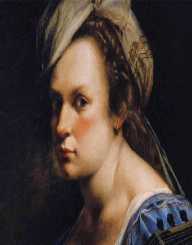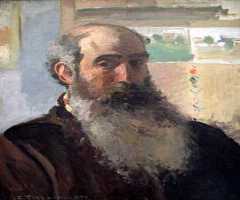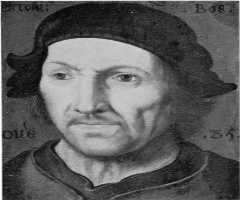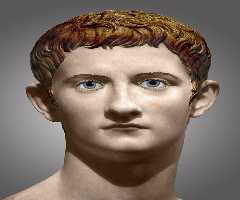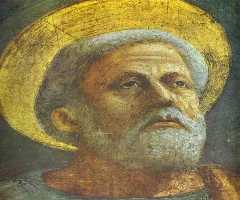Artemisia Gentileschi Biography, Life, Interesting Facts
Artemisia Gentileschi was an Italian Baroque painter who despite the less recognition of women painters at the time made became an accomplished painter. Born on July 8, 1593, she is regarded as one of the best painters of the Caravaggio generation. Artemisia Gentileschi is best known for her work, Judith Slaying Holofernes, which "depicts the decapitation of Holofernes, a scene of horrific struggle and blood-letting."
Artemisia Gentileschi became the first women member of the Accademia di Arte del Disegno in Florida, at a period where women were not readily accepted in the artistic community of patrons. Her works encompassed pictures of strong and suffering women from the Bible and myths, warriors, suicides, and victims. Artemisia Gentileschi is currently regarded as one of the most expressive and progressive painters of her generation.
Early Life
Artemisia Gentileschi was born to Orazio Gentileschi and Prudentia Montone on July 8, 1593, in Rome. However, a record at the Achivio di Stato indicates Artemisia Gentileschi was born in 1590. His father was a Tuscan painter and so was introduced to painting by her father in his workshop. Artemisia picked the Caravaggio style since her father picked inspiration from that style. However, her subjects for painting, which was naturalistic, were different from that of her father’s idealized. Artemisia Gentileschi was able to resist the "traditional attitude and psychological submission to this brainwashing and jealousy of her obvious talent," which became a plus for her.
Painting
At age seventeen, Artemisia Gentileschi made her first painting work, Susanna e I Vecchioni (Susanna and the Elders). Her father hired a private tutor Agostino Tassi, who he was working with to decorate the vaults of Casino Delle Muse in Palazzo Pallavicini-Rospigliosi in Rome to tutor Artemisia. During this period, Tassi and another person, Cosimo Quorli rapedArtemisia Gentileschi.
Artemisia Gentileschi however, continued to have a sexual relationship with Tassi, hoping he would marry her to restore the lost dignity. Tassi could not fulfill this ambition; hence, Artemisia Gentileschi father pressed charges against Tassi nine months after the incident. Further investigations revealed that Tassi had planned to kill his wife and has had a sexual relationship with his sister-in-law. To verify the claims of Artemisia, Artemisia Gentileschi was subjected to gynecological examination using thumbscrews. Tassi was sentenced to a year in prison, but he never served it. In 1960, she did the painting, Mother, and Child, which reflects those times. Artemisia Gentileschi got married to Pierantonio Stiatessi a month after the rape case, and the couple moved to Florence.
Life In Florence
While in Florence, Artemisia Gentileschi gained a commission for work at Casa Buonarroti. Artemisia successfully became a court painter with patronage from the House of Medici and Charles I of England. Artemisia Gentileschi became the first woman to be admitted into the Accademia Della Arti delDisegno (Academy of the Arts of Drawing). Artemisia Gentileschi also made friends with prominent artists like Cristofani Allori and gained the favors and protection of Cosimo II de’ Medici, Grand Duke of Tuscany and Grand Duchess, Christina of Larraine. Some of her works in Florence include La Conversionedella Maddalena (The Conversion of the Magdalene), Self-Portrait as a Lute Player (currently at the Wadsworth Atheneum Museum of Art) and Giuditta con la suaancella (Judith and her Maidservant), now in the Palazzo Pitti.
Artemisia Gentileschi also made Judith Beheading Holofernes (1612–13), displayed in the Museo di Capodimonte, Naples and the second version of Judith beheading Holofernes, now housed in the Uffizi Gallery in Florence. In 1620, Artemisia Gentileschi hidden relationship with a wealthy Florentine nobleman named Francesco Maria Maringhiwas discovered and begun to spread in Florentine court. The discomfort that came with the rumors coupled with financial and legal challenges made Artemisia Gentileschi relocate to Rome without her husband in 1621.
While in Rome her intense painting style in was limited. Much is not known about her activities during this time but works considered to be done in Rome includes Susanna and the Elders (1622), the Ritratto di gonfaloniere (Portrait of Gonfaloniere), now in Bologna andGiuditta con la suaancella, (Judith and her Maidservant) now housed at the Detroit Institute of Arts. Others areVenere Dormiente (The Sleeping Venus), at Virginia Museum of Fine Arts, Richmond, and her Ester ed Assuero (Esther and Ahasuerus) at the Metropolitan Museum of Art in Manhattan.
Naples And The English Period
Artemisia Gentileschi left Rome for Naples in 1630, where Artemisia Gentileschi would live for the rest of her career except some brief trips to London. While there, Artemisia Gentileschi built an artistic collaboration with artists Massimo Stanzione due to the similarities in their work. Artemisia Gentileschi worked on paintings in a cathedral dedicated to San Gennaro nell'anfiteatro di Pozzuoli (Saint Januarius in the amphitheater of Pozzuoli) in Pozzuoli and painted Nascita di San Giovanni Battista (Birth of Saint John the Baptist) in the Museo del Prado in Madrid and Corisca e ilsatiro (Corsica and the satyr). During the close of her career, her works became more feminine, and her style also changed due to her self-consciousness as a woman painter.
Personal Life
Artemisia Gentileschi was married to the Florence artist, Pierantonio Stiatessi a month after her rape. The couple had a daughter, Prudentia in 1618. Artemisia Gentileschi was first taught to have died between 1652 or 1653, but it emerged that as at 1654, she was still accepting new commissions. It was therefore believed that she died in during an outbreak that killed several people in Naples. It killed a whole generation of Neapolitan artists.
